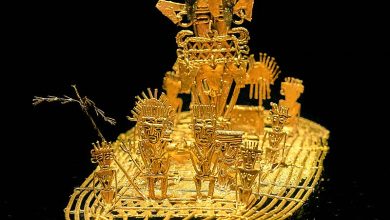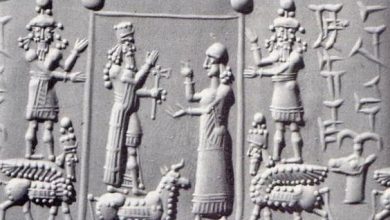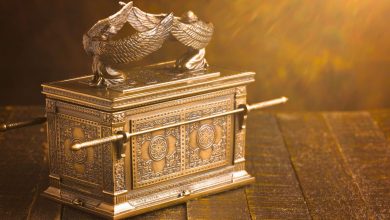The story of the 47 Ronin, also known as the Akō vendetta, is an enduring legend that continues to captivate audiences centuries after it unfolded. Their tale of loyalty, sacrifice, and revenge has been immortalized in kabuki plays, films, books, and cultural artifacts, forever etched in the fabric of Japanese history.

A Historical Mystery:
The events surrounding the 47 Ronin took place in the early 18th century. Lord Asano Naganori, a high-ranking samurai, was forced to commit ritual suicide (seppuku) after assaulting court official Kira Yoshinaka in a dispute over etiquette. As a result, his 47 loyal retainers became ronin, masterless samurai ostracized from society. Led by the resourceful Oishi Kuranosuke, they embarked on a two-year mission to avenge their master’s death by killing Kira. The details of their planning, including their lives as ronin, are shrouded in mystery. Some accounts portray them as diligent warriors honing their skills, while others depict them living disguised lives amidst the common people.
The Climactic Vendetta:
On a snowy night in 1703, the 47 Ronin stormed Kira’s mansion in a daring raid. They fought fiercely, ultimately killing Kira and retrieving their master’s head. Their victory, however, came at a price. Their actions violated the Shogun’s law, and they were ordered to commit seppuku. On the 47th day after their attack, they gathered at Sengakuji Temple and performed the ritual suicide, concluding their vengeful mission.
Legacy of Honor and Controversy:
The story of the 47 Ronin became a cultural phenomenon. Their loyalty and commitment to bushido, the samurai code of honor, resonated deeply with the Japanese people. They were lauded as heroes, martyrs who sacrificed their lives for the sake of their master. Their legend was immortalized in kabuki plays, such as “Chūshingura,” which became a cornerstone of Japanese theater.
However, the story is not without controversy. Some argue that the ronin’s actions were ultimately self-serving and lacked true honor. They violated the law and caused unnecessary bloodshed, sacrificing innocent lives in their pursuit of revenge. This perspective highlights the complex moral questions surrounding their actions.
Members

Below are the names of the 47 rōnin in the following form: family name – pseudonym (kemyō) – real name (imina). Alternative readings are listed in italics.
- Ōishi Kuranosuke Yoshio/Yoshitaka (大石 内蔵助 良雄)
- Ōishi Chikara Yoshikane (大石 主税 良金)
- Hara Sōemon Mototoki (原 惣右衛門 元辰)
- Kataoka Gengoemon Takafusa (片岡 源五右衛門 高房)
- Horibe Yahei Kanamaru/Akizane (堀部 弥兵衛 金丸)
- Horibe Yasubei Taketsune (堀部 安兵衛 武庸)
- Yoshida Chūzaemon Kanesuke (吉田 忠左衛門 兼亮)
- Yoshida Sawaemon Kanesada (吉田 沢右衛門 兼貞)
- Chikamatsu Kanroku Yukishige (近松 勘六 行重)
- Mase Kyūdayū Masaaki (間瀬 久太夫 正明)
- Mase Magokurō Masatoki (間瀬 孫九郎 正辰)
- Akabane Genzō Shigekata (赤埴 源蔵 重賢)
- Ushioda Matanojō Takanori (潮田 又之丞 高教)
- Tominomori Sukeemon Masayori (富森 助右衛門 正因)
- Fuwa Kazuemon Masatane (不破 数右衛門 正種)
- Okano Kin’emon Kanehide (岡野 金右衛門 包秀)
- Onodera Jūnai Hidekazu (小野寺 十内 秀和)
- Onodera Kōemon Hidetomi (小野寺 幸右衛門 秀富)
- Kimura Okaemon Sadayuki (木村 岡右衛門 貞行)
- Okuda Magodayū Shigemori (奥田 孫太夫 重盛)
- Okuda Sadaemon Yukitaka (奥田 貞右衛門 行高)
- Hayami Tōzaemon Mitsutaka (早水 藤左衛門 満尭)
- Yada Gorōemon Suketake (矢田 五郎右衛門 助武)
- Ōishi Sezaemon Nobukiyo (大石 瀬左衛門 信清)
- Isogai Jūrōzaemon Masahisa (礒貝 十郎左衛門 正久)
- Hazama Kihei Mitsunobu (間 喜兵衛 光延)
- Hazama Jūjirō Mitsuoki (間 十次郎 光興)
- Hazama Shinrokurō Mitsukaze (間 新六郎 光風)
- Nakamura Kansuke Masatoki (中村 勘助 正辰)
- Senba Saburobei Mitsutada (千馬 三郎兵衛 光忠)
- Sugaya Hannojō Masatoshi (菅谷 半之丞 政利)
- Muramatsu Kihei Hidenao (村松 喜兵衛 秀直)
- Muramatsu Sandayū Takanao (村松 三太夫 高直)
- Kurahashi Densuke Takeyuki (倉橋 伝助 武幸)
- Okajima Yasoemon Tsuneshige (岡島 八十右衛門 常樹)
- Ōtaka Gengo Tadao/Tadatake (大高 源五 忠雄)
- Yatō Emoshichi Norikane (矢頭 右衛門七 教兼)
- Katsuta Shinzaemon Taketaka (勝田 新左衛門 武尭)
- Takebayashi Tadashichi Takashige (武林 唯七 隆重)
- Maebara Isuke Munefusa (前原 伊助 宗房)
- Kaiga Yazaemon Tomonobu (貝賀 弥左衛門 友信)
- Sugino Jūheiji Tsugifusa (杉野 十平次 次房)
- Kanzaki Yogorō Noriyasu (神崎 与五郎 則休)
- Mimura Jirōzaemon Kanetsune (三村 次郎左衛門 包常)
- Yakokawa Kanbei Munetoshi (横川 勘平 宗利)
- Kayano Wasuke Tsunenari (茅野 和助 常成)
- Terasaka Kichiemon Nobuyuki (寺坂 吉右衛門 信行)
The Enduring Appeal:
Despite the controversy, the 47 Ronin remain a powerful symbol of loyalty, sacrifice, and the enduring spirit of the samurai. Their story continues to resonate with audiences worldwide, offering a glimpse into a fascinating historical period and the intricate code of honor that governed samurai life. The mysteries surrounding their planning and lives as ronin only add to the intrigue, ensuring their enduring legacy as one of the most captivating stories in Japanese history.
Further Exploration:
- Places to visit: The graves of the 47 Ronin can be found at Sengakuji Temple in Tokyo, where they performed seppuku.
- Books: “47 Ronin: The Story of the Loyal Retainers” by John Allyn, “The Samurai: A History” by Thomas Conlan
- Films: “47 Ronin” (1941), “Chushingura” (1962), “47 Ronin” (2013)
- Kabuki plays: “Chūshingura” by Takeda Izumo, Miyoshi Shōraku, and Namiki Senryu
The story of the 47 Ronin remains a captivating blend of history, myth, and controversy. It serves as a reminder of the enduring power of loyalty, sacrifice, and the complex moral dilemmas that can arise in the pursuit of honor.




